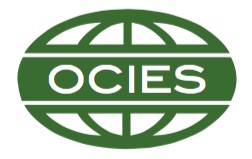Indigenous creativities, the Australian Curriculum, and pre-service teachers
Keywords:
Pre-service teacher education, in-service teacher education, ITE, Aboriginal and Torres Strait Islander histories and cultures, cross curricular priorities, general capabilities, music and visual arts education, Australian curriculum, early years learningAbstract
This research reports the impact of changes made to an Arts education module in Aboriginal and Torres Strait Islander Histories and Cultures within a Bachelor of Education degree, and the learning and experience of pre-service teachers in response to these changes. Aboriginal and Torres Strait Islander music and visual arts making was presented in the module as rich and abundant material to be reflected on and introduced in the classroom. The authors showcased the transformative possibilities for pre-service teachers of studying, reflecting on, and learning about Aboriginal and Torres Strait Islander Arts practises. The authors who crafted the module regarded it as a way to encourage two-way (or both ways) learning in which the celebration of Aboriginal creative knowledges in teaching was encouraged. Pre-service teachers were surveyed, interviewed, and asked to reflect on their exposure to Aboriginal music and visual arts in their learning. The research mapped the growth in respect and understandings that studying Aboriginal arts and Torres Strait Islander creativities developed in pre-service teachers. The research showcased visual arts making from non-Aboriginal students that was produced in response to Aboriginal music and that demonstrated high levels of empathy and understanding.
Downloads
Published
Issue
Section
License
The International Education Journal: Comparative Perspectives is the official journal of the Oceania Comparative and International Education Society. The IEJ, (ISSN 1443-1475), publishes a general volume bi-annually in July and December and also publishes Special Editions occasionally. It is a free, open-access scholarly journal, managed by volunteers. There are no article processing charges, or any charges to authors.
In relation to intellectual property, as of 2020, the IEJ: CP claims only first publication rights; copyright of all work published in the journal remains with the authors under Creative Commons copyright license CC-BY-ND (4.0). Author(s) retain all rights to their works, ensuring that reference to the International Education Journal: Comparative Perspectives is clearly stated on any copies made or distribution. Submissions must not involve third parties with a claim to copyright, and be the sole work of the author(s). It is the responsibility of the author(s) to secure permission to reproduce photographs, illustrations, figures or tables. Single images, tables or figures can be re-used . If more than a single image or table are to be re-used authors must attribute first publication to IEJ: CP notify the IEJ: CP Editor. Authors may also make derivative works which are subject to these limitations.
See https://creativecommons.org/licenses/by-nd/4.0/ for more detail.
Re-distributed or used material must be referenced to the International Education Journal: Comparative Perspectives.
